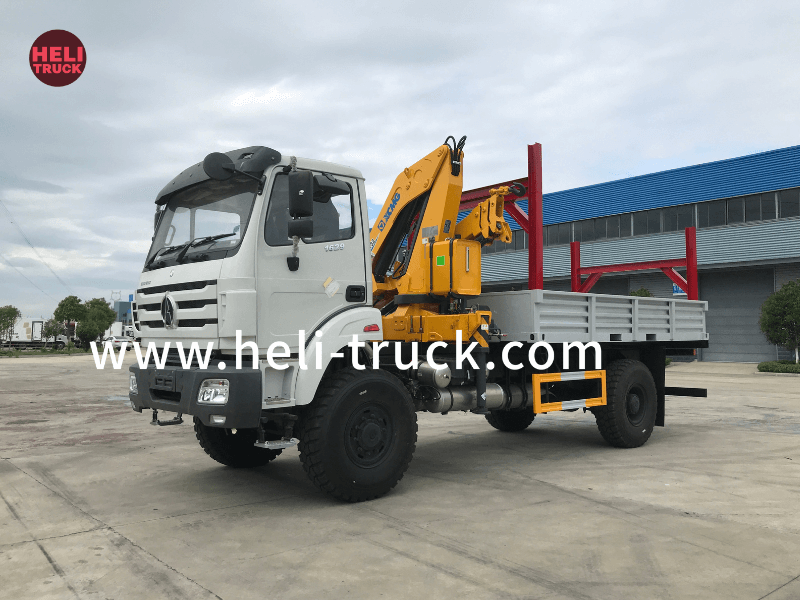Ensuring Work Truck Safety A Comprehensive Guide to Industry Standards and Best Practices
Introduction
Work trucks play a crucial role in various industries, serving as essential tools for transporting goods, equipment, and personnel to job sites. However, the operation of work trucks comes with inherent risks, and ensuring the safety of these vehicles is paramount to protect not only the drivers but also other road users and bystanders. In this article, we will delve into work truck safety standards, regulations, and best practices to promote a culture of safety within the industry and minimize the occurrence of accidents and injuries.
1. Importance of Work Truck Safety
Work truck safety is a critical issue that impacts not only the individuals operating the vehicles but also the general public. Accidents involving work trucks can result in serious injuries, fatalities, property damage, and financial liabilities for companies. By adhering to safety standards and implementing best practices, organizations can create a safer work environment, reduce the likelihood of accidents, and protect their employees and assets.
2. Regulatory Framework
The regulatory landscape governing work truck safety is multifaceted, with various agencies and organizations setting standards and guidelines to ensure the safe operation of these vehicles. In the United States, the Department of Transportation (DOT) and the Occupational Safety and Health Administration (OSHA) play key roles in establishing and enforcing safety regulations for work trucks. Additionally, industry-specific organizations such as the National Truck Equipment Association (NTEA) provide guidance on equipment standards and best practices for work truck manufacturers and operators.
3. Vehicle Design and Maintenance
One of the foundational elements of work truck safety is the design and maintenance of the vehicles themselves. Work trucks should be equipped with safety features such as airbags, antilock brakes, stability control systems, and backup cameras to enhance driver visibility and control. Regular maintenance and inspections are essential to ensure that all vehicle components are in good working condition, reducing the risk of mechanical failures that could lead to accidents.
4. Driver Training and Certification

Ensuring that work truck drivers are properly trained and certified is crucial for promoting safety on the road. Drivers should undergo comprehensive training programs that cover safe driving practices, vehicle operation, load securement, and emergency procedures. Certification processes can help verify that drivers possess the necessary skills and knowledge to operate work trucks safely and efficiently.
5. Load Securement and Cargo Handling
Proper load securement and cargo handling are essential aspects of work truck safety, particularly for vehicles transporting heavy or oversized loads. Failing to secure loads adequately can result in shifting cargo, imbalanced vehicles, and roadway hazards that increase the risk of accidents. Training drivers on proper load securement techniques and implementing protocols for inspecting and securing cargo can prevent accidents and protect both the drivers and other road users.
6. Technology and Innovation
Advancements in technology have significantly enhanced work truck safety, offering a range of tools and systems to improve vehicle performance, driver awareness, and overall operational efficiency. Collision avoidance systems, lane departure warnings, telematics, and driver monitoring software are just a few examples of technologies that can help mitigate risks and prevent accidents. Integrating these innovations into work truck fleets can enhance safety outcomes and reduce the likelihood of incidents on the road.
7. Environmental and Weather Considerations
Work truck safety is not solely dependent on vehicle operation and driver behavior but also on external factors such as environmental conditions and weather hazards. Adverse weather conditions, such as rain, snow, ice, and fog, can significantly impact road safety and visibility, increasing the likelihood of accidents. Organizations should develop protocols and guidelines for driving in inclement weather and provide drivers with the necessary training and resources to navigate challenging road conditions safely.
8. click over here now and Incident Management
Despite proactive measures to prevent accidents, incidents may still occur, necessitating swift and effective emergency response and incident management protocols. Organizations should have procedures in place for reporting accidents, providing medical assistance to injured parties, securing the accident scene, and cooperating with law enforcement investigations. By being prepared to respond to emergencies promptly, companies can minimize the impact of accidents and ensure the safety of their employees and other stakeholders.
9. Continuous Improvement and Training
Work truck safety is an ongoing process that requires a commitment to continuous improvement and training. Organizations should regularly review and update their safety policies, procedures, and training programs to address emerging risks, regulatory changes, and industry best practices. Encouraging a culture of safety within the organization, promoting open communication about safety concerns, and investing in employee training and development can help foster a safe and compliant work environment.
10. Conclusion
Work truck safety is a multifaceted issue that requires a holistic approach encompassing vehicle design, driver training, regulatory compliance, technology integration, and emergency preparedness. By prioritizing safety standards and best practices, organizations can protect their employees, assets, and reputation while contributing to overall road safety. Embracing a culture of safety, investing in training and technology, and staying abreast of regulatory developments are key strategies for promoting work truck safety and mitigating risks in the industry.